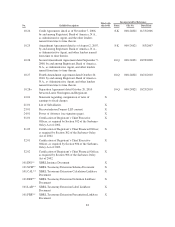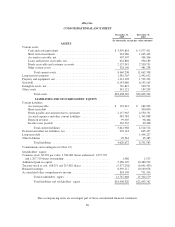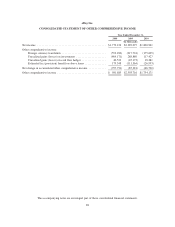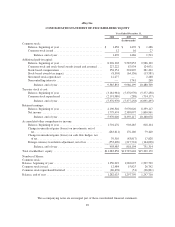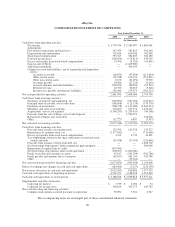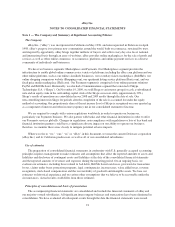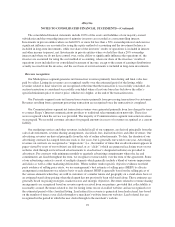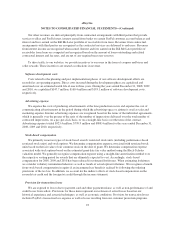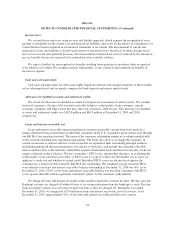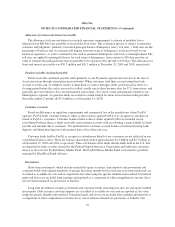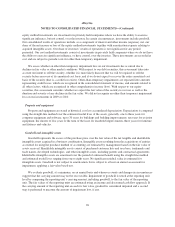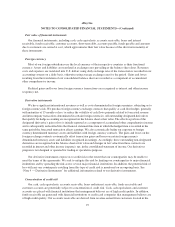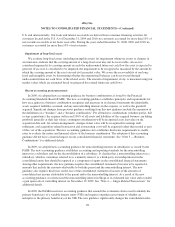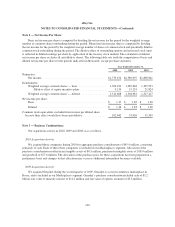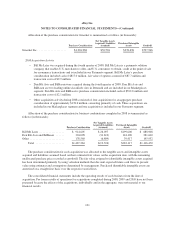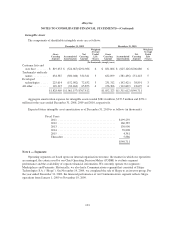eBay 2010 Annual Report Download - page 98
Download and view the complete annual report
Please find page 98 of the 2010 eBay annual report below. You can navigate through the pages in the report by either clicking on the pages listed below, or by using the keyword search tool below to find specific information within the annual report.eBay Inc.
NOTES TO CONSOLIDATED FINANCIAL STATEMENTS—(Continued)
Our other revenues are derived principally from contractual arrangements with third parties that provide
services to eBay and PayPal users, interest earned from banks on certain PayPal customer account balances and
interest and fees earned on the Bill Me Later portfolio of receivables from loans. Revenues from contractual
arrangements with third parties are recognized as the contracted services are delivered to end users. Revenues
from interest income are recognized when earned. Interest and fees earned on the Bill Me Later portfolio of
receivables from loans are computed and recognized based on the amount of loans outstanding and related
contractual interest and fee rates, and are net of any required necessary reserves.
To drive traffic to our websites, we provide incentives to our users in the form of coupons and buyer and
seller rewards. These incentives are treated as reductions in revenue.
Software development costs
Costs related to the planning and post implementation phases of our software development efforts are
recorded as an operating expense. Direct costs incurred during the development phase are capitalized and
amortized over an estimated useful life of one to three years. During the years ended December 31, 2008, 2009
and 2010, we capitalized $147.7 million, $160.4 million and $193.1 million of software development costs,
respectively.
Advertising expense
We expense the costs of producing advertisements at the time production occurs and expense the cost of
communicating advertisements in the period during which the advertising space or airtime is used as sales and
marketing expense. Internet advertising expenses are recognized based on the terms of the individual agreements,
which is generally over the greater of the ratio of the number of impressions delivered over the total number of
contracted impressions, on a pay-per-click basis, or on a straight-line basis over the term of the contract.
Advertising expense totaled $923.4 million, $799.9 million and $808.4 million for the years ended December 31,
2008, 2009 and 2010, respectively.
Stock-based compensation
We primarily issue two types of stock-based awards: restricted stock units (including performance-based
restricted stock units) and stock options. We determine compensation expense associated with restricted stock
units based on the fair value of our common stock on the date of grant. We determine compensation expense
associated with stock options based on the estimated grant date fair value method using the Black-Scholes
valuation model. We generally recognize compensation expense using a straight-line amortization method over
the respective vesting period for awards that are ultimately expected to vest. Accordingly, stock-based
compensation for 2008, 2009 and 2010 has been reduced for estimated forfeitures. When estimating forfeitures,
we consider voluntary termination behaviors as well as trends of actual option forfeitures. We recognize a benefit
from stock-based compensation in equity if an incremental tax benefit is realized by following the ordering
provisions of the tax law. In addition, we account for the indirect effects of stock-based compensation on the
research tax credit and the foreign tax credit through the income statement.
Provision for transaction losses
We are exposed to losses due to payment card and other payment misuse, as well as non-performance of and
credit losses from sellers. Provisions for these items represent our estimate of actual losses based on our
historical experience and actuarial techniques, as well as economic conditions. Provision for transaction losses
includes PayPal’s transaction loss expense as well as losses resulting from our customer protection programs.
93


